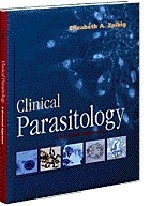Descripción de la obra
All of the guidelines needed to perform, read, and interpret parasitology tests is clearly presented in this easy-to-use new text/laboratory manual. It explores organism identification and familiarizes readers with laboratory diagnostic techniques. By reading the material, completing the worksheets, and working through the case studies, readers will develop start-to-finish skills they need to successfully identify parasites in the student or clinical laboratory setting.
Features
Individual chapters cover the various types of amebas, flagellates, hemoflagellates, malaria, miscellaneous protozoa, nematodes, filariae, cestodes, trematodes, and arthropods that are commonly seen in the clinical setting.Each chapter contains a thorough description of the different forms of parasites within that organism type, plus numerous detailed drawings, with structures labeled where appropriate, characteristics-at-a-glance tables that cover the most medically important parasite forms, comparison drawings of look alike parasites, case studies, and identification worksheets that allow readers to make their own drawings of parasites.
Individual parasite descriptions include concise information on life cycles, epidemiology, clinical symptomatology, laboratory diagnosis, treatment, prevention and control, notes of interest, and new trends.Case studies in each chapter present a sample patient history and symptomatology, pertinent laboratory findings, drawings of the organism(s) present, and a series of questions. Answers to the questions are provided in an appendix. Additional case studies at the back of the book provide further opportunities for readers to test their problem-solving skills.
A chapter on Artifacts and Confusers provides helpful comparison drawings of selectparasites and their "look alikes", and a chapter in Specimen Processing covers standard methods, immunologic testing, new techniques and reporting of results and quality control.
Contents
Introduction. The Amebas. The Flagellates. The Hemoflagellates. Malaria. Miscellaneous Protozoa. The Nematodes. The Filariae. The Cestodes. The Trematodes. Artifacts & Confusers. The Arthropods. Specimen Processing. Practice Case Studies. Alphabetized Glossary. Case Study Answers.
